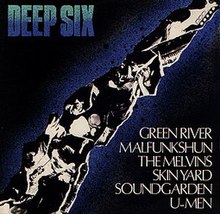This article is about Western art music from 1000 AD to the present. For Western art music from 1750 to 1820, see Classical period (music). For other classical music traditions, see List of classical and art music traditions.
Classical music is the art music produced in, or rooted in, the traditions of Western liturgical and secular music, encompassing a broad period from roughly the 11th century to present times.[1] The central norms of this tradition became codified between 1550 and 1900, which is known as the common practice period.European music is largely distinguished from many other non-European and popular musical forms by its system of staff notation, in use since about the 16th century.[2] Western staff notation is used by composers to prescribe to the performer the pitch, speed, meter, individual rhythms and exact execution of a piece of music. This leaves less room for practices such as improvisation and ad libitum ornamentation, that are frequently heard in non-European art music (as in Indian classical music and Japanese traditional music) and popular music.[3][4][5]
The term "classical music" did not appear until the early 19th century, in an attempt to "canonize" the period from Johann Sebastian Bach to Beethoven as a golden age.[6] The earliest reference to "classical music" recorded by the Oxford English Dictionary is from about 1836.
Given the extremely broad variety of forms, styles, genres, and historical periods generally perceived as being described by the term "classical music," it is difficult to list characteristics that can be attributed to all works of that type. Vague descriptions are plentiful, such as describing classical music as anything that "lasts a long time," a statement made rather moot when one considers contemporary composers who are described as classical; or music that has certain instruments like violins, which are also found in other genres. However, there are characteristics that classical music contains that few or no other genres of music contain.
As regards Indian classical music in general, there are a huge number of modes (ragas). Musicians will elaborate a single mode in detail, largely through improvisation but also based on compositions and formal demands. There are also pieces (called "ragamala" or "ragamalika") in which modulations are employed. Individual pieces are shorter in Carnatic music, so recitals are constructed by selecting items in contrasting ragas. The rationale is specifically contrast (usually), as opposed to Turkish music where modes are chosen for a directed development, or Arabic music where the frequent modulations should be as unnoticed as possible, etc. A general aesthetic discussion of this type could become much more extensive.
In both Hindustani & Carnatic music, songs (or instrumental compositions in Hindustani music) are usually (although not always) preceded by an improvised unmeasured prelude (alap/alaapana) which is sometimes extensive. This is followed by the "composition section" in which a specific rhythmic cycle (tala) is used (ordinarily with percussion accompaniment). Although it is usually based upon a pre-existing composition, there are specific improvisational features to this section as well. This aspect earns Indian classical music comparisons with Western Jazz, with which it shares some demands.
Hindustani music is the music of North India, involving both Hindu and Muslim musicians. In this case (as opposed to every other world classical tradition, except European), there are a large number of high quality recordings. Different people will, no doubt, like different styles to varying degrees. In this case, I am only going to list some discs I particularly enjoy without any intention of coming close to encyclopedic coverage.
Dhrupad is the older style of Hindustani music, now rare. The style with which most readers will be more familiar is the more modern style, especially as represented in the Hindustani instrumental (sitar, etc.) list above.
Carnatic music is the music of South India, different in many of its terms and formal demands, although similar in overall outline. The two share some common origins, but the details of these relationships can be contentious.
Indian classical music continues to gain tremendously in popularity in the West, and is now taught widely. In addition to many opportunities to learn it at universities or in specialized instruction, more general resources are appearing. The recently released "Raga Guide" on Nimbus Records is a landmark and well worth pursuing for someone interested in learning the rudiments of ragas:

